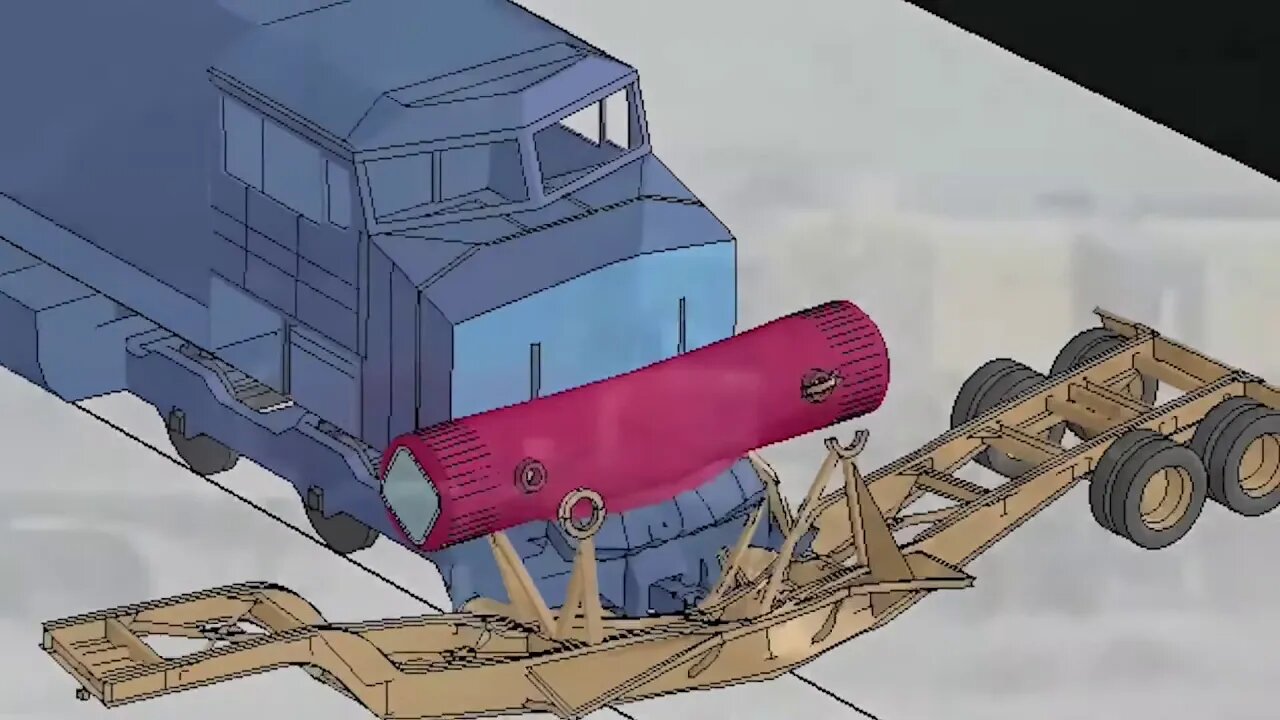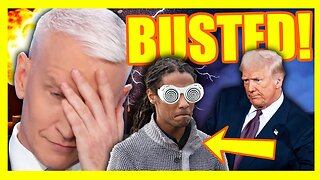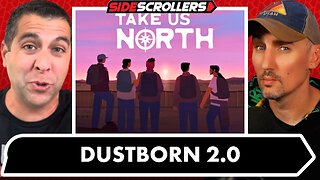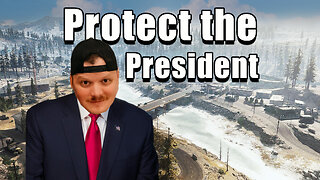Premium Only Content

Spent Nuclear Fuel Transportation Container Accident Testing
Spent nuclear fuel (SNF) containers, also known as “casks” in the United States, or “flasks” in other countries, are used to transport SNF around the world. In the U.S., SNF transport is regulated by the U.S. Department of Transportation and the U.S. Nuclear Regulatory Commission. Design and testing requirements for SNF containers are internationally standardized by the International Atomic Energy Agency. The required tests must be conducted in the following sequence:
1.Free Drop: 30 ft (9 meters) free drop onto an essentially unyielding surface
2. Puncture: 40 in (1 meter) drop onto a 6 in wide (16 centimeter), 8 in (20 centimeter) long steel rod
3.Thermal: exposure to an engulfing fire at 1475°F (800°C) for 30 minutes
4.Immersion – fissile material: Immersion in 3 ft (0.9 meters) of water for 8 hours
These tests equate to the container hitting a concrete highway overpass at high speed (Free Drop test), then falling onto a small rigid structural support (Puncture test), then being involved in a severe and long-lasting fuel fire (Thermal test), and then rolling into a shallow body of water (Immersion test). During and after the tests, the container must contain the nuclear material, limit radiation doses to acceptable levels, and prevent a nuclear chain reaction.
In the video, the structures on the ends of the SNF containers that dent or crush in the tests are called “impact limiters.” They are specifically designed to be crushed to absorb the damage from an accident and protect the SNF container and its contents.
A second, deep-water immersion test must also be conducted on an undamaged SNF container (not as part of the sequence listed above)
5. Immersion – all packages: Immersion in 660 ft (200 meters) of water for 1 hour
An “essentially unyielding surface” is a key element of the drop test. It means that the SNF container absorbs ALL of the force and damage from the impact. For physical tests, an “essentially unyielding surface” generally has to be 10 times the mass of the SNF container. So, a 30 ton SNF container would have to be dropped onto a 300 ton surface, and a 200 ton SNF container would have to be dropped onto a 2,000 ton surface. For this reason, it is common for the SNF container drop tests to now be conducted using computer model simulations.
References: 49 Code of Federal Regulations; 10 Code of Federal Regulations 71.73; 10 Code of Federal Regulations 71.61
The U.S. Department of Energy’s Office of Nuclear Energy works with industry and other stakeholders to extend the life cycles of our current fleet of reactors and to develop new technologies that will help meet future environmental and energy goals.
Follow us on social media:
Facebook: https://www.facebook.com/nuclearenerg...
Twitter: https://www.twitter.com/GovNuclear/
LinkedIn: https://www.linkedin.com/showcase/Nuc...
---
Subscribe so you don't miss a video http://youtube.com/energygov
Check out our cool pics on http://instagram.com/energy
Listen to our podcast http://energy.gov/podcast
More to learn on http://facebook.com/energygov
Keep up with the tweets at http://twitter.com/ENERGY
Subscribe now for more videos from over 280 sources plus my own videos!
Subscribe to my entertainment channel too or at least peek at my other channel !!! https://www.youtube.com/channel/UCiNFsoytAuun90UzU5AuxXg
https://www.bitchute.com/channel/YsJ0PYUWx5An/
https://www.patreon.com/user?u=26453564
-
 13:25
13:25
Kurt's News
3 months agoCNN Host BUSTED Lying & Rewriting History on White SA Farmers
79 -
 40:14
40:14
Uncommon Sense In Current Times
15 hours ago $1.23 earnedThe Dating Crisis in America | J.P. De Gance on the Church’s Role in Restoring Family & Faith
25.4K3 -
 12:35
12:35
Red Pill MMA
17 hours agoNow We Know The Truth.. Hero Who Stopped Raja Jackson Speaks Out
2.84K3 -
 41:04
41:04
Coin Stories with Natalie Brunell
1 day agoCooking, Culture & Crypto: Norma Chu’s Food Empire Turns Bitcoin Treasury
5.75K -
 8:03
8:03
MattMorseTV
16 hours ago $7.28 earnedThings in the UK just got INSANE...
84.2K125 -
 3:02:10
3:02:10
daniellesmithab
11 hours agoAlberta Next: Fort McMurray Town Hall
15K1 -
 2:11:17
2:11:17
Side Scrollers Podcast
20 hours agoINSANE Illegal Migrant Propaganda Xbox Game + Paypal REFUSES To Pay Dev + More | Side Scrollers
62.7K3 -
 20:58
20:58
GritsGG
1 day agoProtect the President Challenge on Warzone!
18.7K -
 1:49:07
1:49:07
The Michelle Moore Show
2 days ago'Biden's Immigration Mess, President's Trump Spiritual Cry For Help, English Speaking Truckers Only, Woke CEO's Killing of Conservative Brands, Palantir's Kill Chain' Mark Taylor: The Michelle Moore Show (Aug 25, 2025)
39.4K97 -
 LIVE
LIVE
Lofi Girl
2 years agoSynthwave Radio 🌌 - beats to chill/game to
244 watching